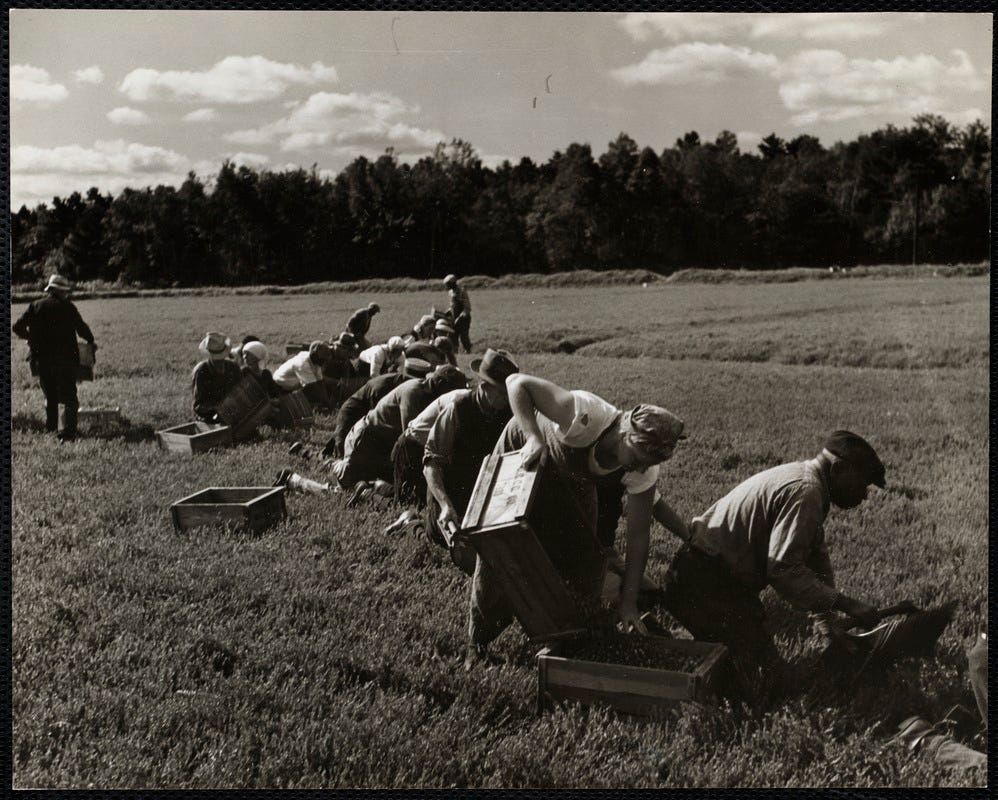Seasons of Strife: The Cranberry Strikes of the 1930s
An Examination of the Deep Origins, Context, Outbreak, and Consequences of the Cranberry Strikes of the Great Depression in Southeastern Massachusetts
[Readers, here is a very long article about a little-known aspect of our history, the great cranberry strikes of the 1930s in southeastern Massachusetts. It took a good deal of work, so I will just note that paid subscribers are vital for this publication’s work and continuation; they are particularly critical in allowing me to write the free articles that I view as being of essential public interest on issues like Holtec, casino developers, sand mining, and important local elections. This article is drawn from my area of training, academic history, and portions of this are excerpted from my doctoral dissertation, but most of it is new. I do hope that if you aren’t a paid subscriber, you might consider becoming one.
If you wish to refer back to the article, as it is so long — about 30 pages — that it won’t fit in a single email, the website for this newsletter is plymouthcountyobserver.substack.com, where it and other pieces may be found.
I wish to thank all of my readers, and all of my subscribers, both free and paid, for their generous support. I really do appreciate it, and I am very grateful to each of you. — Ben Cronin.]
In the depths of the Great Depression, the cranberry country of Plymouth County and Cape Cod was wracked by a series of convulsive and ultimately violent strikes, undertaken by cranberry pickers against a combination of bog owners, the police, and local officials in a series of attempts to organize unions and to obtain higher wages and better working conditions. These strikes occurred in Towns throughout the region, but were concentrated in southern Plymouth County, particularly in Carver and Wareham. This article will examine the deep origins and the historical context and development of these strikes.
(Cranberry pickers on a southeastern Massachusetts bog in the mid-20th century. Credit — Claire Kress Griffin, via Digital Commonwealth.1)
The main source for this article is a 1945 publication from the Bureau of Labor




